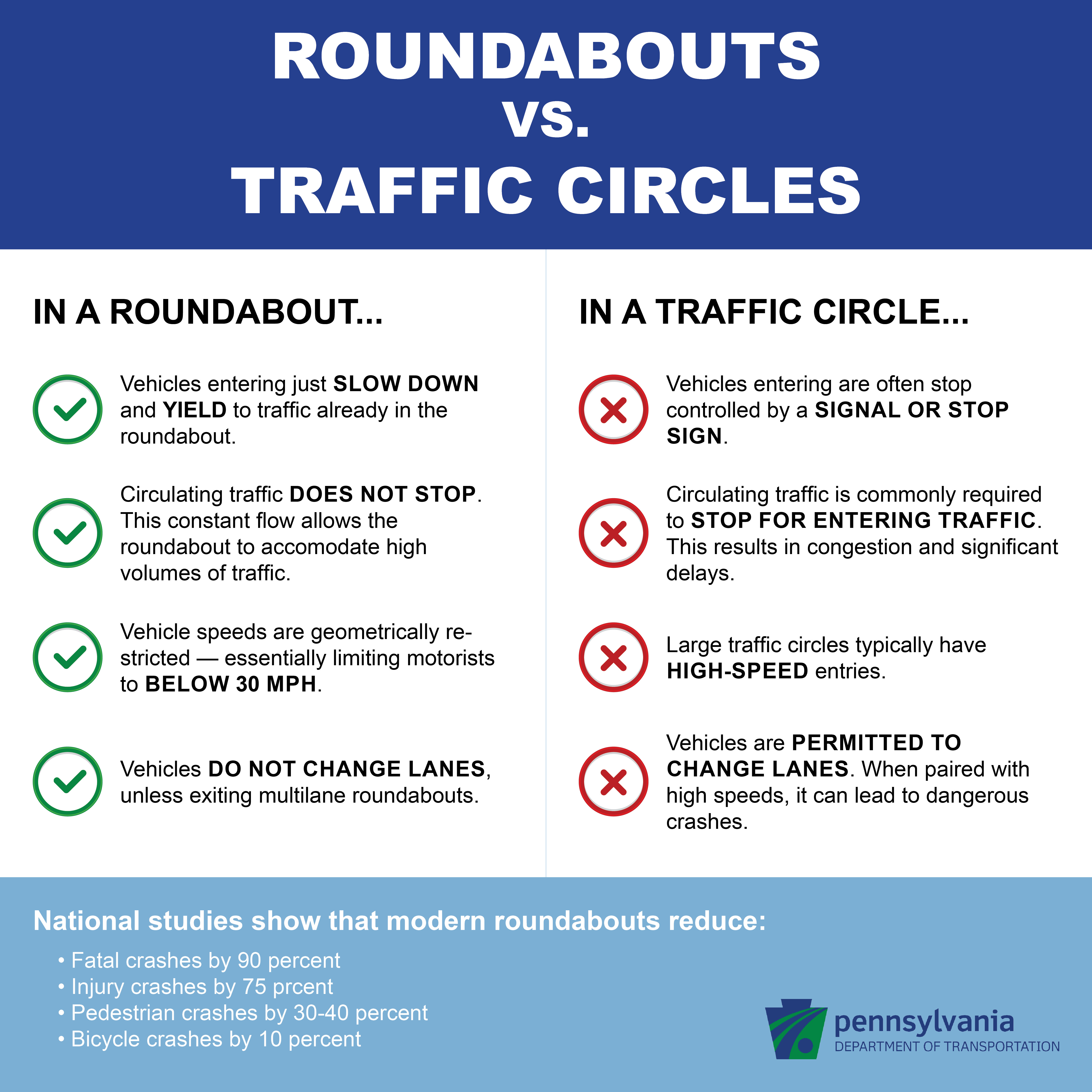Whenever PennDOT announces a roundabout as part of a road improvement project, we inevitably hear the same concerns: "Why are you installing a roundabout? Didn't New Jersey get rid of theirs? They are so dangerous!"
We can assure you, though, we would never replace an intersection with something that was going to make driving more dangerous. In fact, roundabouts have been proven to be safer than traditional stop-sign or signal-controlled intersections. National studies show that modern roundabouts reduce fatal crashes by up to 90 percent. Modern roundabouts also improve pedestrian safety by allowing people to cross shorter distances of slower-moving one-way traffic due to refuge areas provided between opposing traffic flows.

What about New Jersey then? Modern roundabouts in Pennsylvania are NOT the same as the old-style New Jersey traffic circles, which operate on a different set of principles. For instance, motorists entering traffic circles tend to have the right of way (not as safe), whereas traffic entering a roundabout must yield to motorists already in the circle (much safer). Traffic circles also tend to be much larger, but are inefficient for handling the increased traffic volumes we face today.
Another fun fact? Roundabouts typically carry about 30 percent more vehicles than similarly sized signalized intersections during peak flow conditions. During off-peak conditions, roundabouts cause almost no delay, but traffic signals can cause delay to side streets and traffic turning left from the major street.
Oh, and that raised strip around the center of the roundabout? That's called a truck apron, and large trucks are expected to have their trailer wheels ride over it.
Still have questions on roundabouts? Visit our roundabout page on www.penndot.gov, or email ra-roundabout@pa.gov.
Follow PennDOT on social media — Facebook, Twitter, and Instagram.